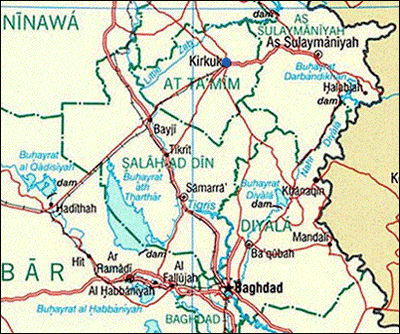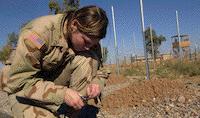Kirkuk Airbase occupies a 9 square kilometer site and is protected by 12 kilometers of security perimeter.
Task Force Ironhorse, 173d Airborne Brigade, secured the oil rich, ethnically diverse city of Kirkuk and surrounding areas in the northern portion of the Task Force area of operations.
April, 2003 the first contingent of the 5th Combat Communications Group communicators stepped off a C-130 on an airbase in Kirkuk, Iraq. The twelve members of this force were to bring state-of-the-art communications to this airbase held by the Iraqi government only weeks before. Only three Air Force aircraft landed previously bringing in the tanker airlift control element.
Combat comm had arrived early in the fight. Kirkuk was devastated in the previous weeks by looters taking everything that could be removed.
 |
